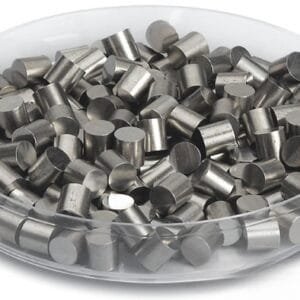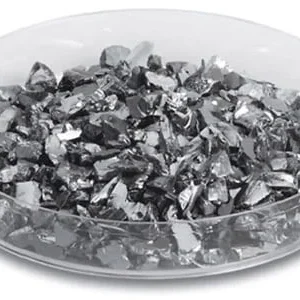Tungsten Disilicide Evaporation Materials Overview
Tungsten disilicide (WSi₂) is a silicide ceramic material renowned for its role in high-precision deposition processes. TFM specializes in manufacturing tungsten disilicide evaporation materials with exceptional purity levels, up to 99.9995%. These materials are crucial for achieving high-quality deposited films and are produced under stringent quality assurance measures to ensure reliability.
Specifications of Tungsten Disilicide Evaporation Materials
| Material Type | Tungsten disilicide |
| Symbol | WSi2 |
| Appearance/Color | Blue-gray tetragonal crystals |
| Melting Point | 2,160 °C (3,920 °F; 2,430 K) |
| Density | 9.3 g/cm3 |
| Purity | 99.5% |
| Shape | Powder/ Granule/ Custom-made |
Applications of Tungsten Disilicide Evaporation Materials
Tungsten disilicide evaporation materials are integral to various deposition techniques, including:
- Semiconductor deposition
- Chemical vapor deposition (CVD)
- Physical vapor deposition (PVD)
These materials are primarily used for optical applications such as wear protection, decorative coatings, and displays.
Packaging and Handling
Our tungsten disilicide materials are meticulously tagged and labeled to facilitate efficient identification and quality control. We prioritize careful packaging to prevent damage during storage and transportation.
Contact TFM
TFM is a premier provider of high-purity tungsten disilicide evaporation materials. We offer various shapes, including tablets, granules, rods, and wires, with custom options available upon request. In addition to evaporation materials, we supply evaporation sources, boats, filaments, crucibles, heaters, and e-beam crucible liners. For current pricing and inquiries about materials not listed, please contact us directly.


 MSDS File
MSDS File



Reviews
There are no reviews yet.